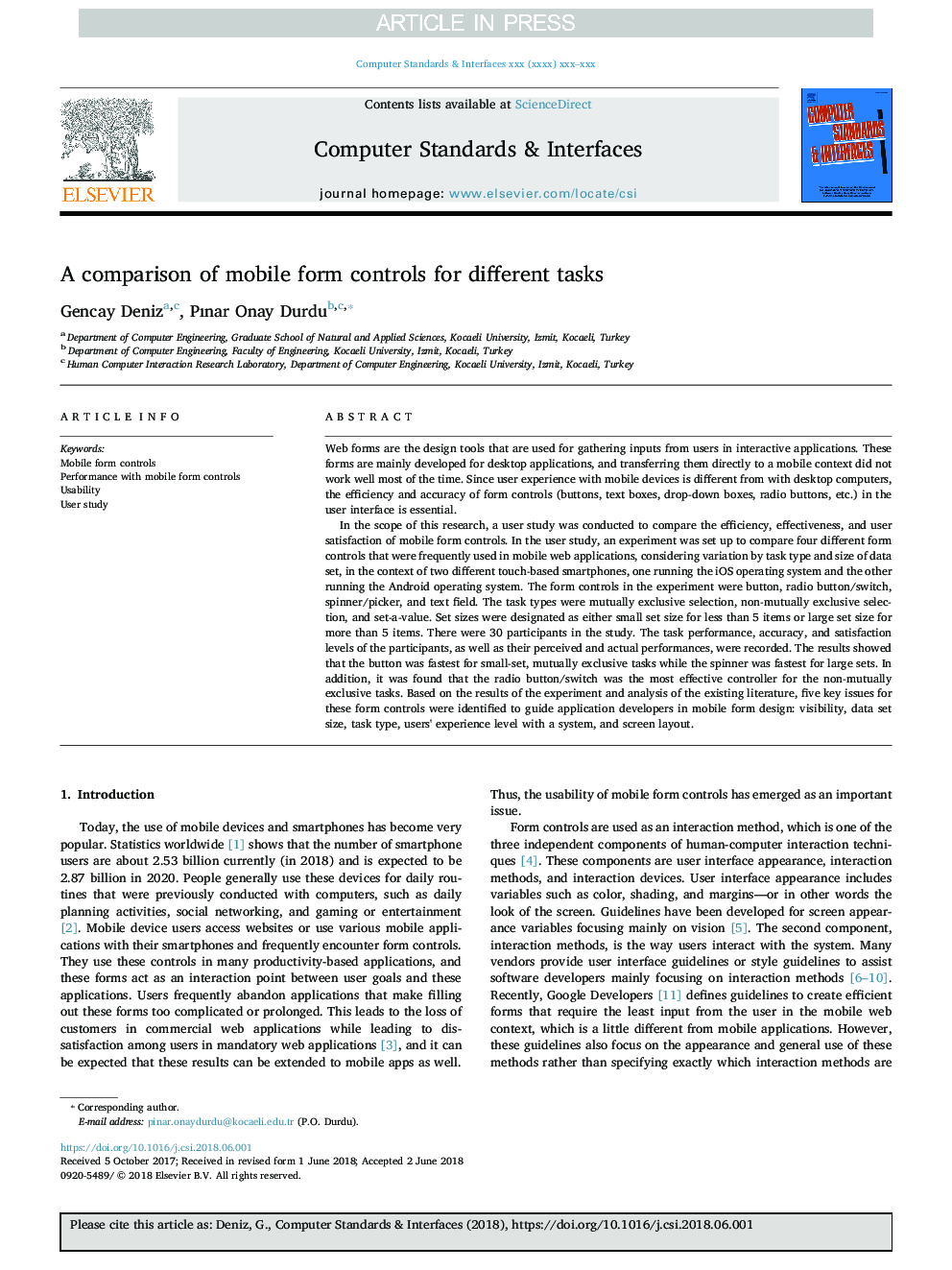| Article ID | Journal | Published Year | Pages | File Type |
|---|---|---|---|---|
| 9951452 | Computer Standards & Interfaces | 2019 | 10 Pages |
Abstract
In the scope of this research, a user study was conducted to compare the efficiency, effectiveness, and user satisfaction of mobile form controls. In the user study, an experiment was set up to compare four different form controls that were frequently used in mobile web applications, considering variation by task type and size of data set, in the context of two different touch-based smartphones, one running the iOS operating system and the other running the Android operating system. The form controls in the experiment were button, radio button/switch, spinner/picker, and text field. The task types were mutually exclusive selection, non-mutually exclusive selection, and set-a-value. Set sizes were designated as either small set size for less than 5 items or large set size for more than 5 items. There were 30 participants in the study. The task performance, accuracy, and satisfaction levels of the participants, as well as their perceived and actual performances, were recorded. The results showed that the button was fastest for small-set, mutually exclusive tasks while the spinner was fastest for large sets. In addition, it was found that the radio button/switch was the most effective controller for the non-mutually exclusive tasks. Based on the results of the experiment and analysis of the existing literature, five key issues for these form controls were identified to guide application developers in mobile form design: visibility, data set size, task type, users' experience level with a system, and screen layout.
Keywords
Related Topics
Physical Sciences and Engineering
Computer Science
Computer Networks and Communications
Authors
Gencay Deniz, Pınar Onay Durdu,
